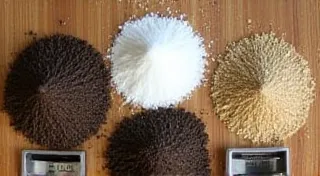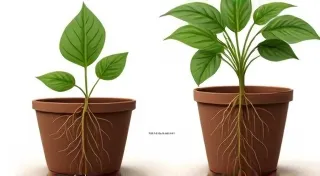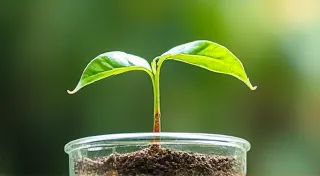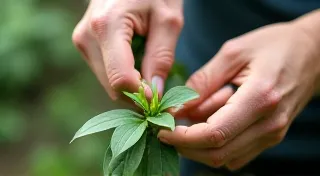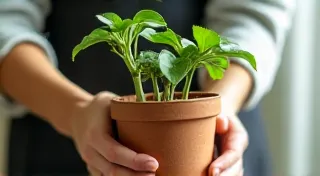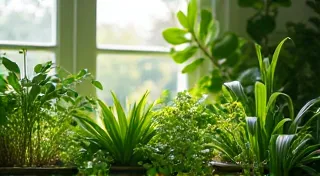Fertilizing Your Houseplants: A Beginner's Guide to Nutrients
Welcome to the wonderful world of houseplants! You’re likely doing a great job with watering and sunlight, but are you providing your plants with the essential nutrients they need to thrive? Fertilizing is a crucial, yet often misunderstood, aspect of plant care. This guide breaks down the basics, making it easy for beginners to understand and implement.
Why Do Houseplants Need Fertilizer?
Unlike plants growing in the ground, houseplants are potted in a limited amount of soil. This soil eventually depletes of the nutrients your plant needs to grow strong and healthy. Fertilizer replenishes these nutrients, promoting lush foliage, vibrant blooms, and overall vitality. Often, diagnosing problems with houseplants can be tricky – is it a nutrient deficiency, a pest infestation, or simply an issue with watering? Understanding these distinctions is key to keeping your plants thriving; for a deeper dive into common houseplant problems and how to solve them, be sure to check out our guide.
Understanding Plant Nutrients
Fertilizers are typically labeled with three numbers, representing the percentage of Nitrogen (N), Phosphorus (P), and Potassium (K). These are known as macronutrients, and they play distinct roles:
- Nitrogen (N): Essential for leaf growth and a rich green color.
- Phosphorus (P): Supports root development, flowering, and fruiting.
- Potassium (K): Contributes to overall plant health, disease resistance, and stem strength.
Additionally, plants need micronutrients like iron, manganese, and zinc, though they require these in smaller amounts. A balanced fertilizer typically contains all these essential elements. Before you even start fertilizing, it's a good idea to be familiar with what those labels on plant pots actually mean. Our guide to understanding plant labels can help you decode the information and choose the right plants for your environment.
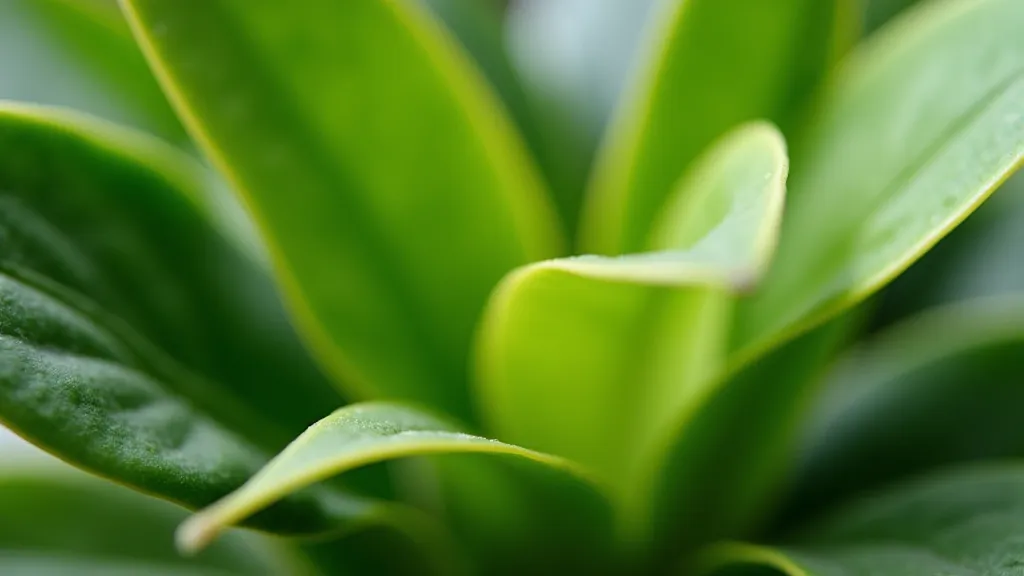
Types of Fertilizers
Fertilizers come in various forms, each with its pros and cons:
- Liquid Fertilizers: Easy to apply and quickly absorbed by plants. Dilute according to the package instructions.
- Granular Fertilizers: Slow-release options that provide nutrients over a longer period. Sprinkle around the base of the plant and water thoroughly.
- Slow-Release Pellets: Similar to granular fertilizers but often release nutrients even more gradually.
- Fertilizer Spikes: Inserted into the soil, these release nutrients slowly. Be careful not to insert them too close to the stem to avoid root burn.
You can find fertilizers specifically formulated for different types of houseplants, like African Violets, orchids, or succulents. These are often a good choice for beginners as they have the ideal nutrient balance for those particular plants. Sometimes, the process of moving a plant to a new pot is necessary for its long-term health. If you’re feeling overwhelmed by the prospect of repotting and the associated care, our guide to repotting houseplants offers a step-by-step explanation, covering everything from choosing the right pot to handling the roots.
How to Fertilize Your Houseplants: A Step-by-Step Guide
- Read the Label: Always follow the manufacturer's instructions regarding dosage and frequency.
- Fertilize During the Growing Season: Most houseplants actively grow during spring and summer. Reduce or stop fertilizing during fall and winter when growth slows.
- Water Before Fertilizing: Moist soil helps fertilizer absorb properly and prevents root burn.
- Dilute Properly: More isn't always better! Over-fertilizing can damage your plant.
- Observe Your Plants: Look for signs of nutrient deficiency (yellowing leaves, stunted growth) or over-fertilization (white crust on the soil). Adjust your fertilizing schedule accordingly.
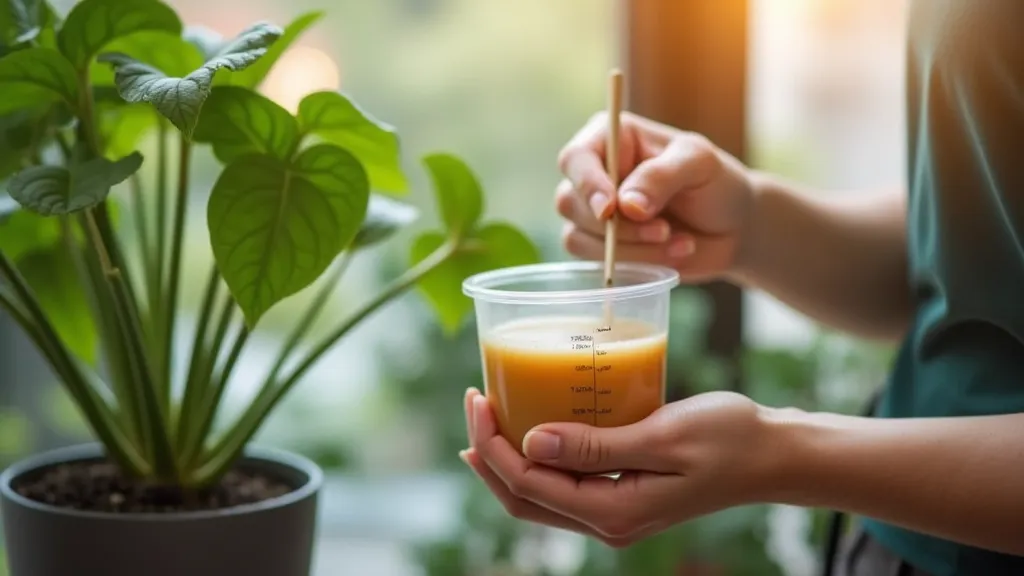
Signs of Over-Fertilizing & Under-Fertilizing
Over-Fertilizing: White crust on the soil surface, burnt leaf tips, stunted growth, wilting.
Under-Fertilizing: Pale or yellowing leaves, slow growth, small leaves, weak stems.
A Simple Fertilizing Schedule
As a general rule, fertilize your houseplants every 2-4 weeks during the growing season (spring and summer). Reduce or stop fertilizing during the dormant season (fall and winter). Remember that while a good fertilizer schedule is helpful, the specific needs of your plant can vary widely. Maintaining the overall health of your plants also includes other care practices like cleaning their leaves. Removing dust helps them absorb more light and contributes to their overall vigor.

Troubleshooting Common Issues & Advanced Tips
Beyond the basics of NPK ratios and fertilizing schedules, there are several nuances to consider. For example, certain plants are notoriously finicky and require extra attention. Orchids, with their specialized root systems and unique nutrient requirements, are often a challenge for beginner plant parents. Similarly, succulents, while often perceived as low-maintenance, thrive on specific soil types and watering practices that can impact nutrient uptake. The nuances of succulent care are especially important to understand, as improper watering is a common cause of problems. Understanding how your plant absorbs nutrients is directly related to the health of its leaves. Sometimes, those leaves just need a good cleaning!
Hard Water Considerations: The quality of your water can significantly impact nutrient absorption. Hard water, high in minerals like calcium and magnesium, can create a buildup in the soil, hindering the uptake of certain nutrients. If you suspect hard water is an issue, consider using filtered water or rainwater for your houseplants. You might also consider adjusting your watering schedule to allow more time for the soil to dry out between waterings, as this can help prevent mineral buildup.
Soil Acidity (pH): The pH of your soil also plays a role in nutrient availability. Most houseplants prefer a slightly acidic soil (pH 6.0-7.0). Soil testing kits are available to measure pH, and amendments like peat moss can be used to lower it if necessary. Maintaining the correct soil pH is crucial for optimal nutrient uptake; without it, even the best fertilizer won’t be fully utilized by the plant.
Understanding Specialized Plant Needs
It’s important to realize that not all houseplants have the same needs. Certain species, like Calatheas or Prayer Plants, are particularly sensitive to over-fertilization, while others, such as Monsteras, can tolerate a bit more. Researching the specific requirements of your plants is key to keeping them thriving. Factors such as light exposure, humidity levels, and even pot size can influence how much fertilizer a plant needs.
Organic vs. Synthetic Fertilizers
When choosing a fertilizer, you have a few main options: organic and synthetic. Organic fertilizers, derived from natural sources like compost or seaweed extract, release nutrients slowly and improve soil health over time. Synthetic fertilizers, on the other hand, are manufactured and deliver nutrients quickly but don’t necessarily benefit the soil’s long-term health. Both types can be effective, but understanding their differences can help you make the right choice for your plants and gardening style. Some argue that organic fertilizers provide a more holistic approach to plant care, supporting the entire ecosystem in the pot.
Signs Your Houseplant Is Thriving
A truly healthy houseplant isn't just surviving; it's thriving! Look for vibrant green leaves, strong stems, and new growth. Flowers are a clear indicator of a well-nourished plant. If your houseplant is consistently exhibiting these signs, you’re likely doing something right!
Final Thoughts
Fertilizing doesn't have to be complicated. With a little knowledge and observation, you can provide your houseplants with the nutrients they need to flourish and enjoy their beauty for years to come. Happy growing!
